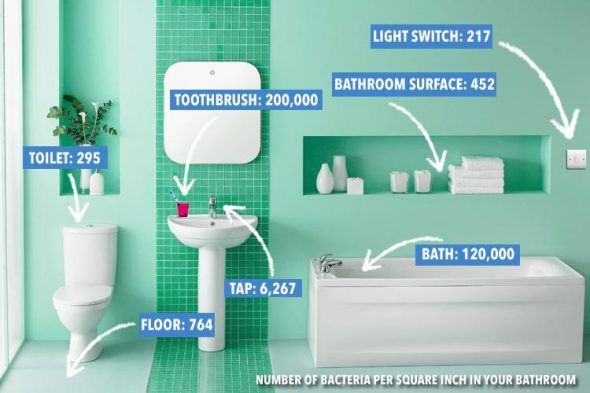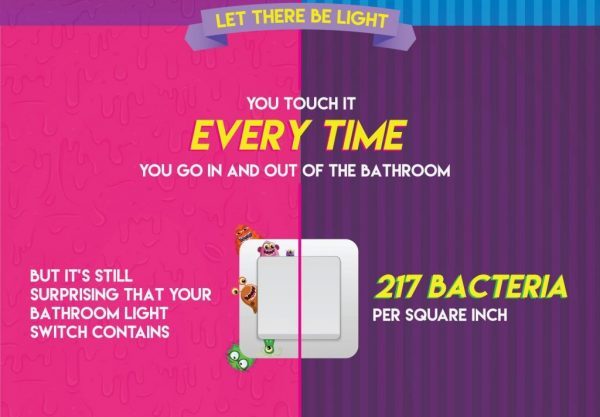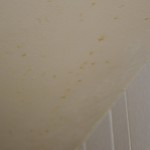Removing Germs in a Bathroom is and Quick To do
I was a little surprised if not taken aback when a friend of mine admitted she never used public restrooms and seldom used bathrooms in other people’s homes. She felt that if she hadn’t cleaned them herself, then the toilets and bathrooms were not germ free. I guess germs in a bathroom are no joke either.
Bathrooms are a breeding ground for bacteria
I felt she was being a bit phobic about it all as in most moist spaces germs do thrive and vulnerable people will sometimes fall ill, as there are germs everywhere we go. So the better you are able to fend off germy invaders in any room of the house, the healthier your immune system is.
Given the moist environs on nearly every surface in a bathroom, it is a breeding ground that allows bacteria to flourish. So, finding out just where they are most prolific, and what we are able to do about it is the important thing.
Toothbrushes in the Bathroom
Toothbrushes that share space in a cup holder is a perfect place for germs to breed. The bristles of a toothbrush sometimes have the residual particles of food and blood between them, and under the right condition it has the potential to become harmful.
The rhinovirus is sometimes contained by Saliva, which is the cause of the common cold, and is able to survive up to three hours outside the human body. Also streptococci mutants and lactobacilli bacterium from dental plaque, along with another common germ Candida is often found on tooth brushes .
A drop of an antimicrobial essential oil, such as clove or peppermint applied after each use, is a nontoxic and effective solution to killing bacteria on toothbrushes, and and the cups that holds the brushes.
Bathroom Surfaces and Germs
Airborne debris such as microscopic particles of dead skin that fall from our clothing and bodies is attracted by flat bathroom surfaces such as floors, counters, cabinet drawers and shelves. Even by the flush of the toilet, germs are projected into the air, by touch or by setting an object or towel upon a surface, germs are spread.
Faucets have higher concentrations of germs in public restroom, which is because their surfaces are seldom dry, and people frequently handle them with bare hands.
As they are most often just left to dry and never wiped down as a sink counter top might be every day or week, Shower curtains are a vulnerable place for the growth of fungi and bacteria . The inner walls of a tub are prime targets for growing bacteria, and also from dead skin cells .
However, keeping a bathroom well-ventilated and dry will go a long way toward keeping the growth of bacteria to a minimum, because it is impossible to clean all surfaces after every use.
Once a day, the surfaces should be sprayed with a nontoxic antimicrobial or disinfectant such as aromatic vinegar water. it is a better treatment than nothing. An oil diffuser would be a wise investment, so that a purifying antimicrobial essential oil such as thyme or lemon diffuses in the room while you shower.
Some selected medical facilities in the United States, and hospitals in Europe also diffuse oils regularly to combat the spread of airborne germs.

















